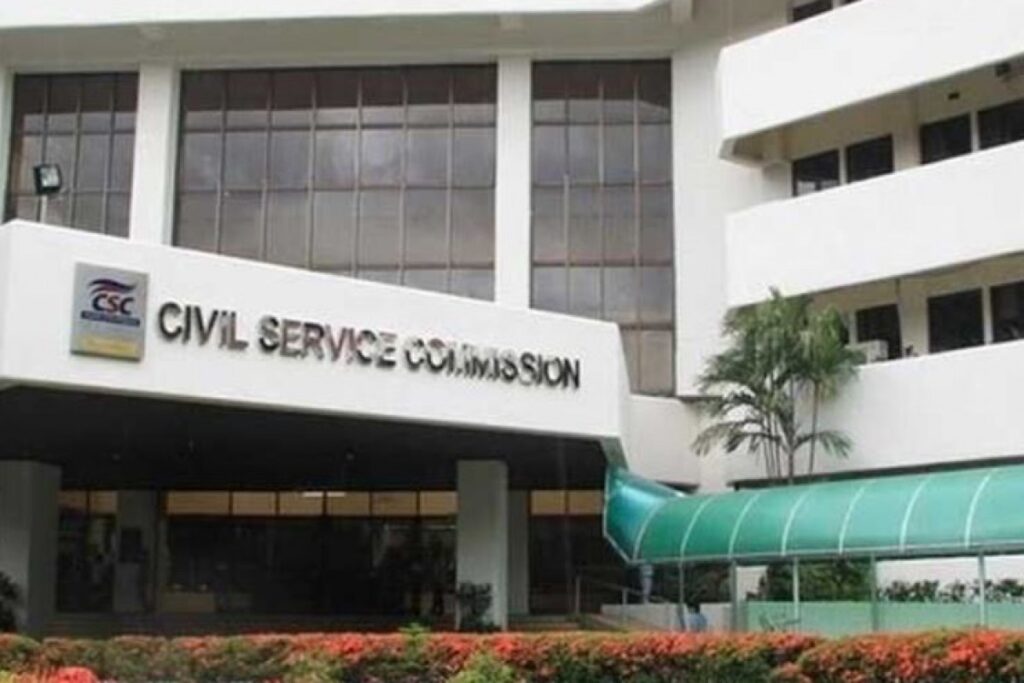With the recent onslaught of heavy rains, the Civil Service Commission (CSC) urged government agencies to adopt safety and health standards in the workplace to protect their employees from risks due to disasters and emergencies.
Chairperson Alicia dela Rosa-Bala said, “Hazards at work, especially those that may result from natural calamities such as volcanic activities and typhoons, may be inevitable but there are things we can do to prevent or at least minimize the negative impacts on people and property.”
She said that adequate preparation would help ensure the continuous delivery of services to the public amid any disruptive event.
Agencies must develop safety and health policies based on their mandate and factors peculiar to their work environment. The Joint Memorandum Circular No. 1, s. 2020, issued jointly by the CSC, Department of Health, and Department of Labor and Employment, contains a comprehensive list of occupational safety and health (OSH) standards.
Among others, the joint circular requires agencies to:
Install adequate fire, emergency, or danger signs within the building premises;
Set up a Risk Reduction Management System and a Crisis Management Plan and Contingency Program;
Provide trainings and drills on Disaster Risk Reduction Management for employees and staff;
Provide adequate emergency supplies such as fire extinguishers and medical first aid kits;
Have a first aider trained and certified or accredited by the Philippine National Red Cross or by any authorized organization; and
Forge a Memorandum of Understanding or Agreement with the nearest government health facility that can provide emergency medical services.
Further, heads of agencies are directed to ensure the creation of a Safety and Health Committee, as well as the strict implementation of and regular budget allocation for OSH programs.
Continuity
Government agencies can also formulate their respective Public Service Continuity Plan (PSCP), an all-hazard plan that aims to ensure continuous delivery of services to the public amid any disruption. It works by highlighting internal capacities, recovery requirements, and strategies to minimize damage and loss to essential processes, ensure succession of leadership, and improve continuity capabilities of all government entities.
Pursuant to National Disaster Risk Reduction and Management Council (NDRRMC) Memorandum No. 33 s. 2018, all government member agencies of the DRRM councils at all levels and other government departments, offices, bureaus, services, units, and instrumentalities are enjoined to develop their own PSCP.
In the recent Memorandum Circular No. 12, s. 2021 dated 27 July 2021, the CSC extended the deadline for submission of PSCP to the Office of Civil Defense-Capacity Building and Training Service, addressed to Usec. Ricardo B. Jalad (OCD, Administrator) through pscp@ocd.gov.ph, until 31 October 2021.
Calamity leave
Relatedly, the CSC reminded government workers who may be directly affected by calamities that they may file for a Special Emergency Leave under CSC Memorandum Circular Nos. 2 and 16 issued 16 February 2012 and 17 October 2012, respectively.
The special emergency leave shall be for a maximum of five (5) working days in a year, which may be applied on a continuous or staggered basis and will not be deducted from the employee’s earned leave credits. The said leave may be availed of within 30 days from the actual occurrence of the natural calamity/disaster.
Said privilege may be used for any of the following: for urgent repair and clean-up of damaged houses, being stranded in affected areas, disease/illness of employees brought by natural calamity/disaster, or caring of immediate family members affected by natural calamity/disaster.
The CSC said that the special emergency leave shall be based on the declaration of state of calamity by the President of the Philippines or the Local Sanggunian in the affected area. However, in case a specific area was not declared to be under a state of calamity, the head of agency may still grant the special emergency leave based on proof or evidence to be presented by the employee or relevant news accounts.
The CSC added that the head of agency or office shall take full responsibility for the grant of special emergency leave and shall set parameters in granting said leave like verification of the situation and extent of damage caused by the calamity to affected employees. Extension of the allowed maximum five days of special emergency leave shall be subject to the sound discretion of the head of agency and the agency’s internal policy on the matter. Agencies are urged to come up with internal guidelines in the grant of the special emergency leave. (CSC/PIA-NCR)
